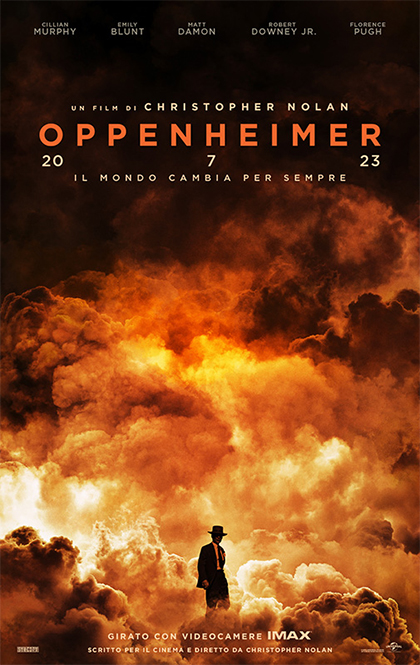
There is a lot of talk in Oppenheimer, a lot. Nolan, having explored memory, the unconscious, the mind, space and time, and their distance or proximity to reality, withdrew from this tour to explore new forms of manipulation of dimensions and staging them on a flat screen to return to the form of history. But always science history, because Nolan knows how dramatic science can be.
In 1942, at the height of World War II, convinced that Nazi Germany was developing nuclear weapons, the United States launched the Manhattan Project to develop the first ever atomic bomb. The American government, through General Leslie Groves (Matt Damon), decides to put the brilliant physicist J. Robert Oppenheimer in charge of the project, who in the small artificial world of Los Alamos, in the New Mexico desert, along with a highly skilled team, begin to develop a revolutionary weapon.

The story of Oppenheimer (Cillian Murphy, supporting actor in Nolan’s films), the father of the atomic bomb, the “destroyer of worlds”, the “American Prometheus” (this is the title of the book by Kai Byrd and Martin J. Sherwin). winner of the Pulitzer Prize on which the film is based) on multiple tracks, in color and black and white, tells the glorious past that led him to become the director of the Manhattan Project, and the present about the accusations of communism by Lewis Strauss (the great Robert Downey Jr., who seems to wink at some of the characters in Stanley Kubrick’s “Dr. Strangelove”, president of the Atomic Energy Commission and Oppenheimer’s main antagonist after his public refusal to support a project to develop the most destructive hydrogen bomb.

This is told through many main characters, witnesses and many words, as if we are in the work of Aaron Sorkin. Nolan wrote the biopic at the pace of a thriller, where you can feel Oppenheimer’s mind racing as fast as Nolan’s, and his thoughts flying across the screen in signs, projections, sparks.
Oppenheimer’s gaze (in which Murphy manages to invest ambition, guilt, lust, doubt, admiration, pain) is amplified by flashes of anticipation of the future, his mind “talks” at the imagination of physical processes that have yet to be turned into theory and further into practice: if in ” In the beginning, Nolan pulled the viewer into the mind, the dream, the unconscious of his characters, but here the character’s thought comes out of his consciousness, from his visions, to penetrate the viewer’s gaze.
Oppenheimer is a film about people creating a monster that can kill and terrorize, accompanied by a menacing soundtrack. The film is about men with two women who enter the life of the protagonist, giving us back other parts of his humanity: Florence Pugh, who plays Jean Tetlock, is a vision within a vision, and Emily Blunt, Oppenheimer’s wife, who shares difficult moments with him. Unlike McCarthyism, she has a few moments at her disposal, but enough to make us understand her strength and determination compared to the figure of her husband, whom Truman described as a “crybaby.”

And at the center of the reconstruction of history, between truth and legend, between “JFK” and “Citizen Kane”, Nolan has an ambiguous narrator: a Jew sympathetic to the left, a supporter of the ideas of freedom and a scientist in love with his own mind, the ability to go where no one has gone yet. Man and scientist, in a continuous confrontation of ups and downs, crash against the wall of ethics, against the war that is ending, against Hitler who is dying, against the danger of knowledge, against the words that were exchanged with Einstein.

© Copyright 2023 Freedom Editorial
